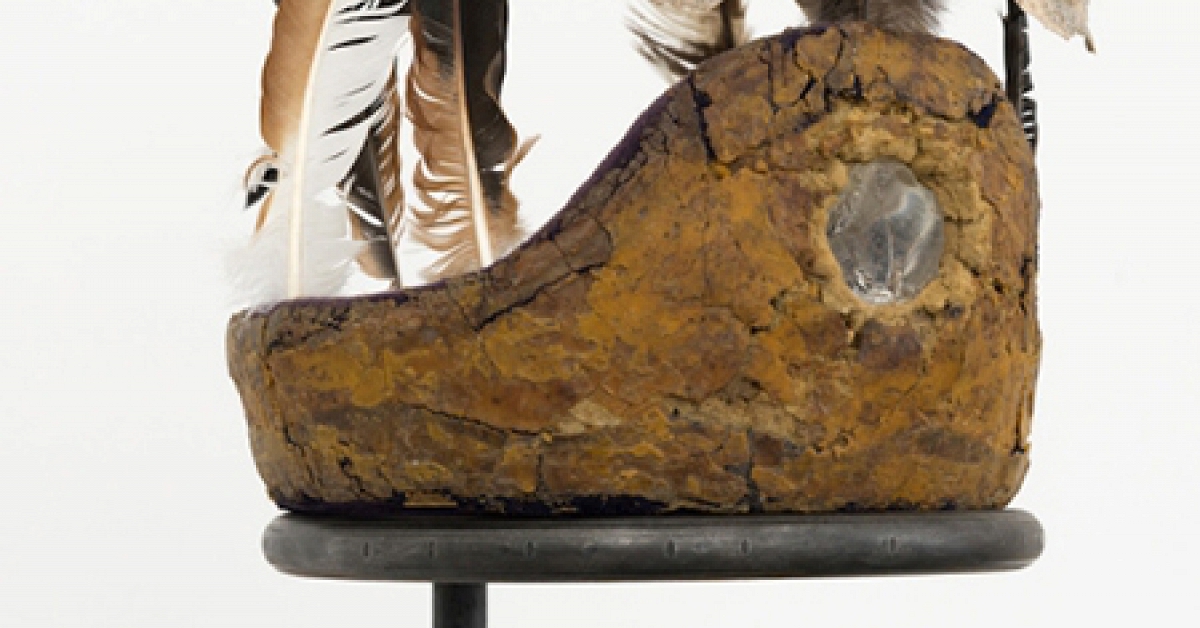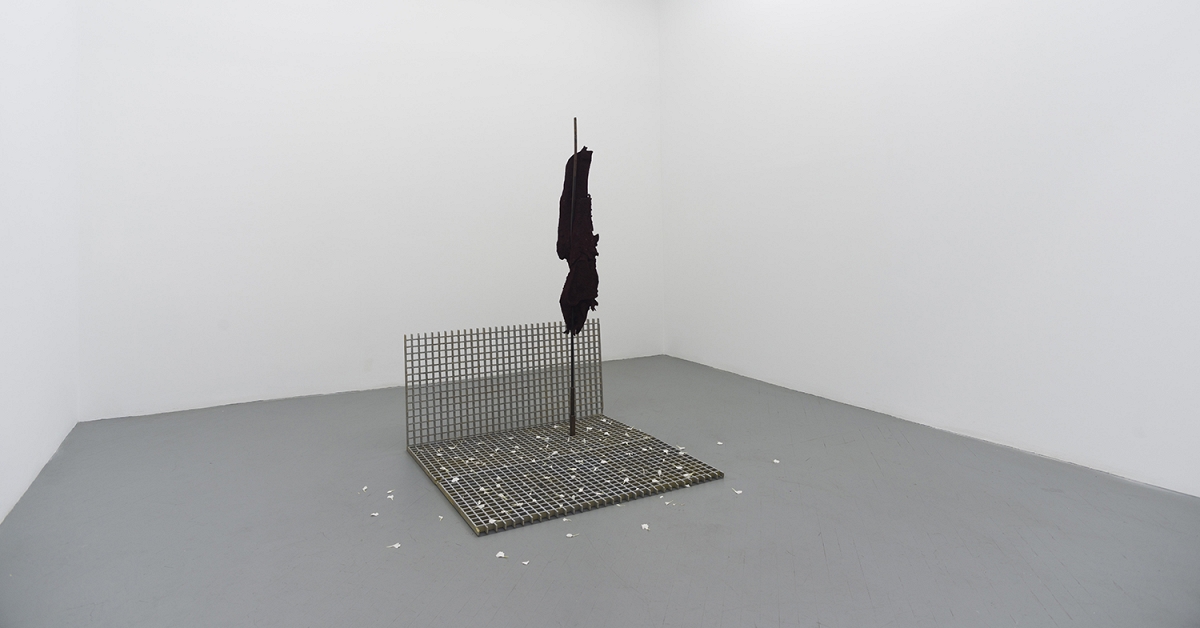Chicago artist Mika Horibuchi paints oil trompe-l’oeil replicas of her grandma’s watercolors
Chicago Reader / Aug 14, 2018 / by Kate Sierzputowski / Go to Original

Photo Credit: Amelia Moore
Mika Horibuchi’s paintings trick the mind into seeing what is not quite there. At first glance they’re nothing more than romanticized watercolors of landscapes or still lifes of fruit and flowers. The subject, however, isn’t where the trick lies: It’s in the materials she uses in their rendering. The paintings aren’t formed from light splashes of watercolor, but rather smears of oil paint. Despite their everyday subject matter, the paintings are part of Horibuchi’s most recent and most personal series: they are copies of her grandmother’s own hobbyist watercolors.
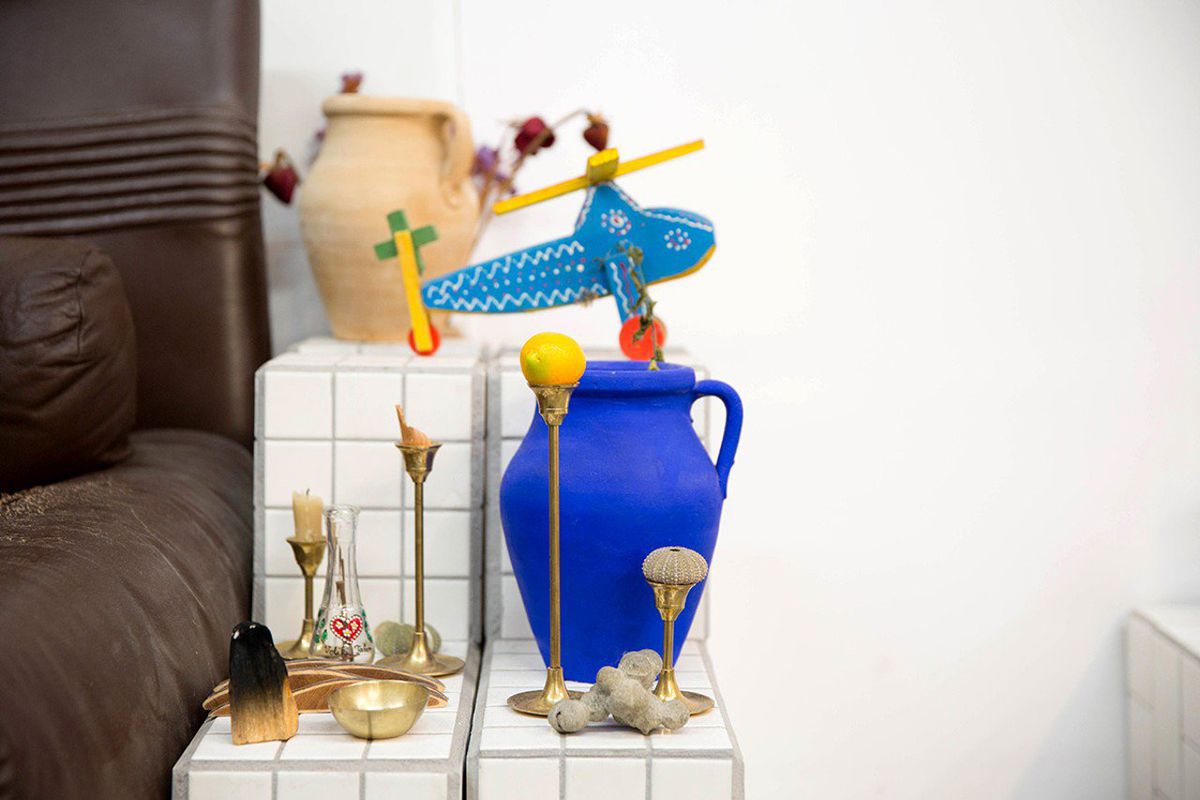
Photo Credit: Amelia Moore
Horibuchi has painted for as long as she can remember, but it wasn’t until an art class in sixth grade when she was living in San Francisco that she created her first oil painting. She learned the basics of the medium by copying familiar images, fastidiously using the same bits of color and gestures she observed in postcards, calendar pages, or her teachers’ own paintings. Through making replicas of simple works, she learned how to accurately capture an environment and also developed an eye for how light influences an object’s shape or tone. A flower’s petals, for example, could be rendered in large strokes rather than a series of individual markings, and a cloud could exist as a balanced smattering of light and dark tones rather than a singular fluffy shape.
Horibuchi moved to Chicago to study painting at the School of the Art Institute of Chicago in 2009. Since graduation she’s worked as a private art teacher and tutor while also keeping up her painting practice in the West Town studio that she splits with her partner and fellow painter Dan Rizzo-Orr.
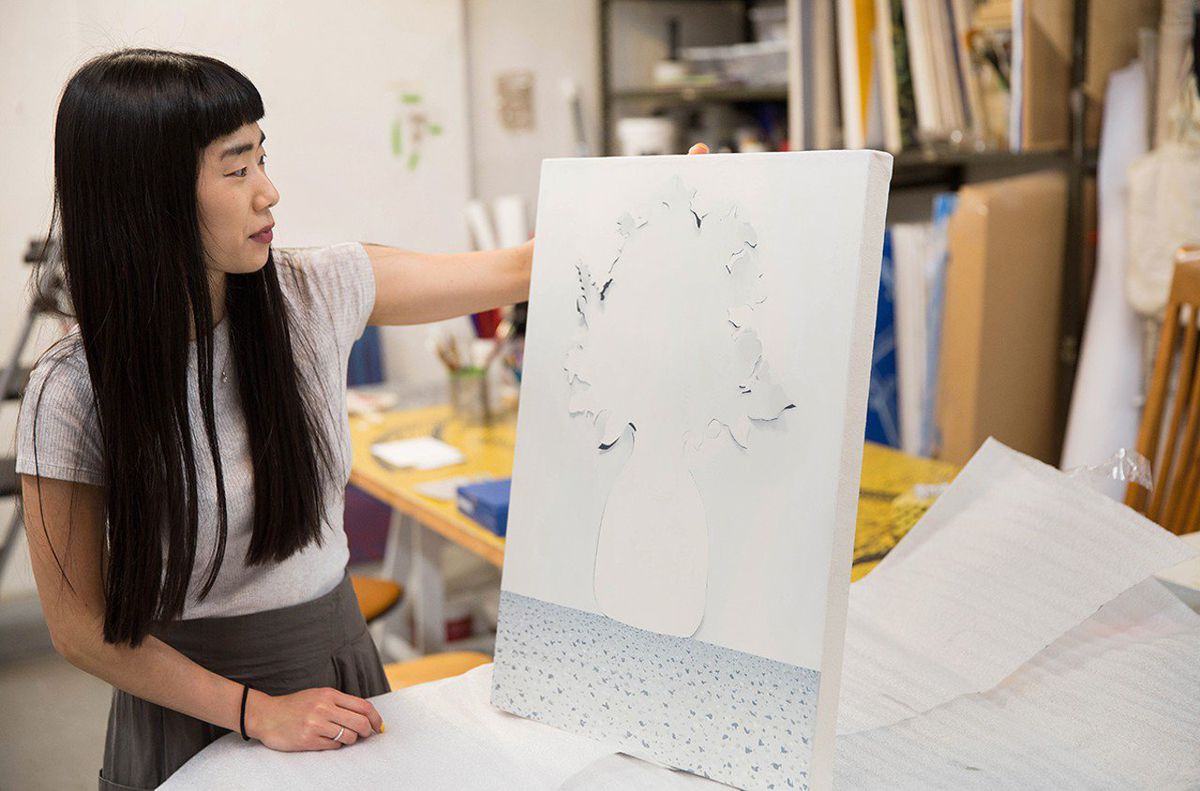
Photo Credit: Amelia Moore
Early in spring 2017, Horibuchi’s maternal grandmother, Sayoko Yokoyama, who is 83 and lives in Japan’s Hiroshima prefecture, requested that Horibuchi mail her a watercolor paint set. After a few initial paintings, Yokoyama began to send photos of the watercolors to Horibuchi that she’d taken with her point-and-shoot camera. The photographs are imperfectly cropped, and sometimes show the bottom edge of a painting or accidentally cut off part of Yokoyama’s signature. Despite their imperfections, Horibuchi was in awe of the works. “I wanted to do something with them,” she says. “I didn’t want to just have the same result, I wanted to know her effort.”
Instead of simply following the outline of the watercolors, Horibuchi began to re-create the photographs themselves. This forced her to include every detail present in Yokoyama’s images—from the awkward cropping to the digital time stamps hovering in the bottom left corners.
Horibuchi studied her grandmother’s paintings the way she had been taught. She dutifully copied each element, stroke, and bit of shading in striking detail—but in oil paint rather than watercolor.
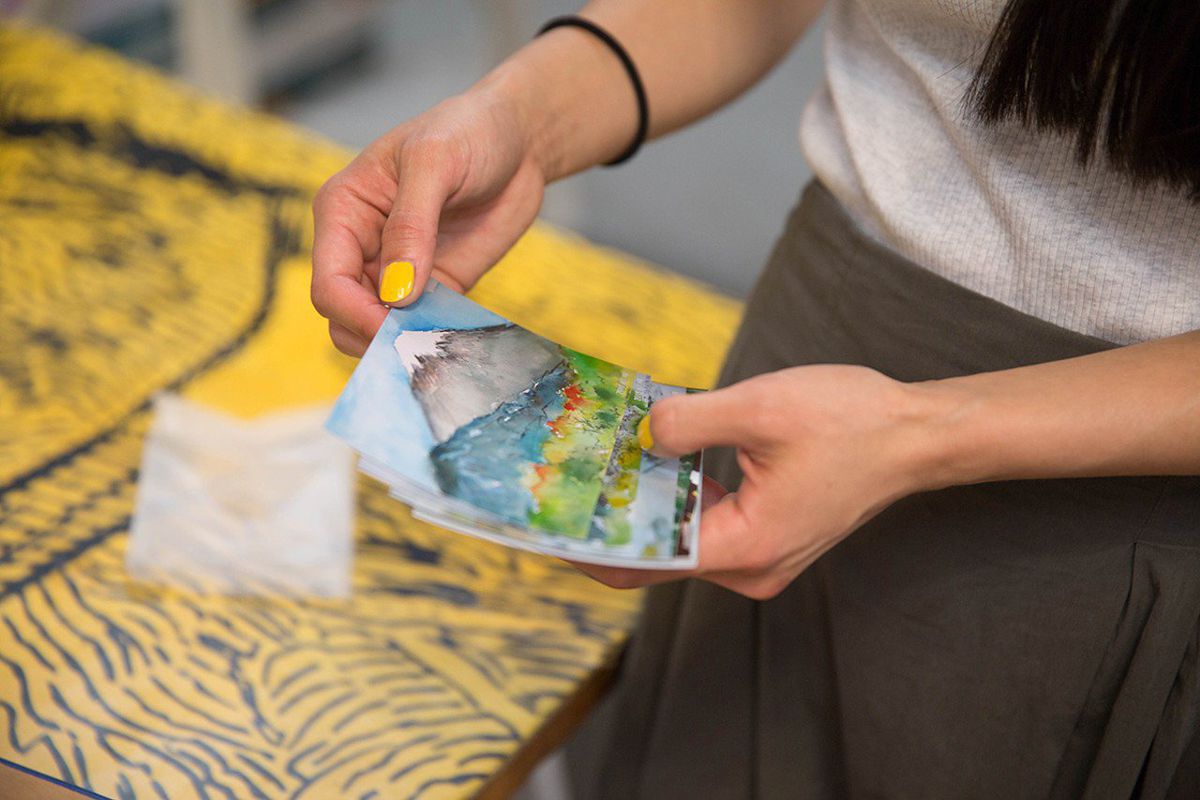
Photo Credit: Amelia Moore
“I am really trying to mimic the characteristics of how water sits on paper,” she explains. “I want to show how it is absorbed or how it pools. For each work, I am mimicking the result and not the technique. It would be much more efficient if I used watercolor, but there is something weird that happens when you paint those marks with the opacity of oil paint. With watercolor you are relying on the white of the paper as a tool to emit light and create different shades, and with oil I am painting on canvas.”
After finishing her paintings, Horibuchi frames each of them on linen with with triangle mounts that secure each corner to create the effect of an old photo album. Two such pieces hang clustered together in Horibuchi’s solo exhibition in the Museum of Contemporary Art’s Chicago Works series, which opened last month. The exhibition creates a through line of the last five years of her practice, from earlier trompe l’oeil curtain studies that she created in 2013, when she was a recent graduate of SAIC, to her present series of watercolor imitations in oil paint.
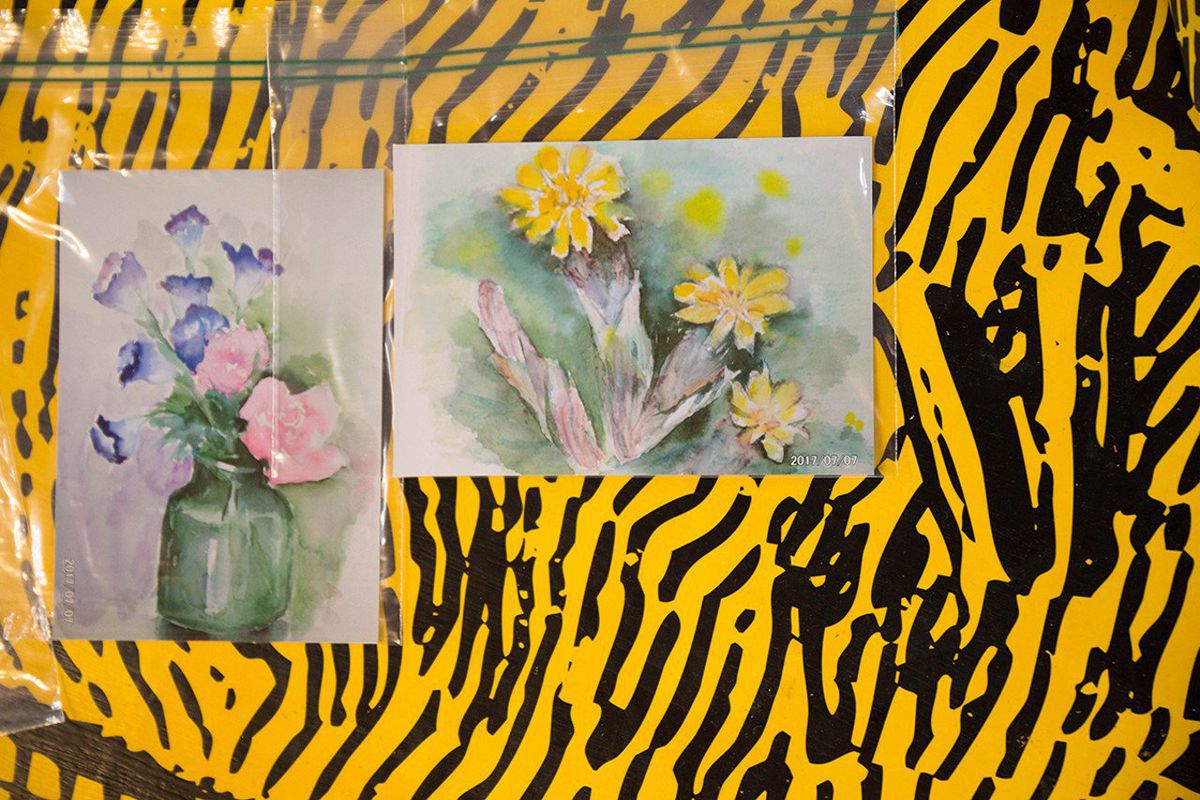
Photo Credit: Amelia Moore
The largest work in the show is installed behind a floor-to-ceiling linen curtain on the left side of the gallery. The installation is inspired by the 17th-century painting Trompe-l’Oeil Still Life With a Flower Garland and a Curtain by Frans van Mieris the Elder and Adriaen van der Spelt, which features a hyperrealistic depiction of a blue curtain obscuring a floral still life. Horibuchi’s piece brings the painting into three dimensions, allowing the audience to sidestep the curtain to get a full view of the large-scale reproduction of one of her grandmother’s works on the other side.
The six-by-almost-eight-foot painting depicts a small pond dotted with large rocks and bushes, set against a hazy blue sky. Ripples appear in the otherwise calm water on the left hand of a painting directly next to a date stamp that reads “2017/07/07.” Although it’s simple in its subject matter, Horibuchi explains that she chose the particular piece as the exhibition’s focal point because she saw the watercolor that inspired it as a breakthrough for her grandmother.
“She really captures the atmosphere and environment of the landscape rather than just objects in a frame,” Horibuchi explains. “She is not trying to draw a rock, she is actually painting a rock. She is thinking several steps ahead. Instead of painting a tree, or a cluster of leafs, she is painting the silhouette of it first. A cluster of brushstrokes doesn’t read as a tree, but it does once placed in the context of the whole image. I think it is one of the best ones she has done.”
Horibuchi typically sends photos of her paintings back to her grandmother after she finishes them, although she hasn’t yet sent images from the current show. Just as she once copied her painting teacher’s work to learn how to see like a painter, Horibuchi’s imitations allow her to look at the world through her grandmother’s eyes, even though they’re separated by material and distance.




